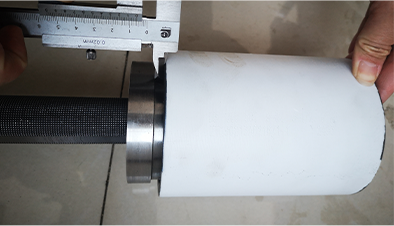- Afrikaans
- Albanian
- Amharic
- Arabic
- Armenian
- Azerbaijani
- Basque
- Belarusian
- Bengali
- Bosnian
- Bulgarian
- Catalan
- Cebuano
- Corsican
- Croatian
- Czech
- Danish
- Dutch
- English
- Esperanto
- Estonian
- Finnish
- French
- Frisian
- Galician
- Georgian
- German
- Greek
- Gujarati
- Haitian Creole
- hausa
- hawaiian
- Hebrew
- Hindi
- Miao
- Hungarian
- Icelandic
- igbo
- Indonesian
- irish
- Italian
- Japanese
- Javanese
- Kannada
- kazakh
- Khmer
- Rwandese
- Korean
- Kurdish
- Kyrgyz
- Lao
- Latin
- Latvian
- Lithuanian
- Luxembourgish
- Macedonian
- Malgashi
- Malay
- Malayalam
- Maltese
- Maori
- Marathi
- Mongolian
- Myanmar
- Nepali
- Norwegian
- Norwegian
- Occitan
- Pashto
- Persian
- Polish
- Portuguese
- Punjabi
- Romanian
- Russian
- Samoan
- Scottish Gaelic
- Serbian
- Sesotho
- Shona
- Sindhi
- Sinhala
- Slovak
- Slovenian
- Somali
- Spanish
- Sundanese
- Swahili
- Swedish
- Tagalog
- Tajik
- Tamil
- Tatar
- Telugu
- Thai
- Turkish
- Turkmen
- Ukrainian
- Urdu
- Uighur
- Uzbek
- Vietnamese
- Welsh
- Bantu
- Yiddish
- Yoruba
- Zulu
j55 coupling
Understanding J55 Coupling in Oil and Gas Industry
In the oil and gas sector, efficient and secure connections between drilling and production equipment are paramount. One of the critical components in achieving this are couplings—a vital connector that ensures the seamless integration of various parts of drilling systems. Specifically, J55 coupling has become a standard choice, valued for its durability and performance in harsh conditions. This article aims to shed light on J55 coupling, its specifications, applications, and significance in the oil and gas industry.
Specifications and Characteristics
J55 coupling is categorized under API (American Petroleum Institute) specifications and is primarily used in the manufacturing of casing and tubing for oil wells. It is made of carbon steel and is known for its tensile strength, which ranges upwards of 75,000 psi. The “J” designation refers to the specific grade of material, while the 55 denotes its yield strength. This coupling blends cost-effectiveness with reliability, making it a popular choice among operators in various environments.
The J55 coupling is typically coated to prevent corrosion, which is critical given the corrosive nature of substances encountered in oil extraction and production. These couplings come in various sizes, allowing flexibility depending on the well depth or specific operational challenges. Standard dimensions include external diameters from 2-3/8 inches to 20 inches, ensuring that they can be adapted to different types of drilling rigs and equipment.
Applications in Oil and Gas
The primary application of J55 coupling is in the completion and maintenance of oil wells. It connects sections of tubular goods—such as casing and tubing—allowing for the safe transmission of fluids, gases, and pressure during drilling and production. The integrity of these couplings is crucial; any failure can lead to catastrophic results, including blowouts or loss of pressure.
j55 coupling

Moreover, J55 coupling is also used in the construction of pipelines for the transportation of crude oil and natural gas. Its robustness ensures that the pipeline can withstand the various pressures and stresses encountered, thereby maintaining a consistent flow and preventing leaks.
Importance in Operations
The importance of J55 coupling extends beyond mere functionality; it enhances operational efficiency and safety. A well-made coupling reduces the risk of failure during drilling operations, which can lead to costly delays and safety hazards for personnel. In addition, the reliability of a J55 coupling helps to minimize the risk of spills or leaks, supporting environmental sustainability initiatives within the industry.
Furthermore, using J55 couplings aligns with regulatory standards set by governing bodies, ensuring that operators maintain compliance with safety and quality benchmarks. This not only protects the environment but also promotes social responsibility within the oil and gas sector.
Conclusion
In summary, J55 coupling is an essential component of modern oil and gas operations. Its strength, adaptability, and cost-effectiveness make it a staple in the industry. As technology advances and the demand for efficient oil extraction grows, the significance of reliable couplings like J55 will continue to be pivotal in ensuring successful and safe drilling and production processes.
-
Tubing Pup Joints: Essential Components for Oil and Gas OperationsNewsJul.10,2025
-
Pup Joints: Essential Components for Reliable Drilling OperationsNewsJul.10,2025
-
Pipe Couplings: Connecting Your World EfficientlyNewsJul.10,2025
-
Mastering Oilfield Operations with Quality Tubing and CasingNewsJul.10,2025
-
High-Quality Casing Couplings for Every NeedNewsJul.10,2025
-
Boost Your Drilling Efficiency with Premium Crossover Tools & Seating NipplesNewsJul.10,2025







